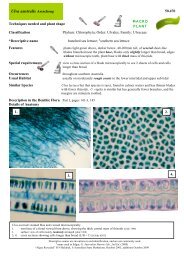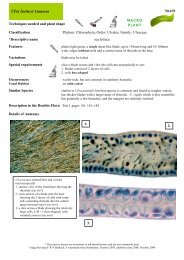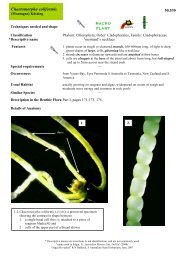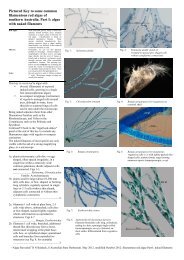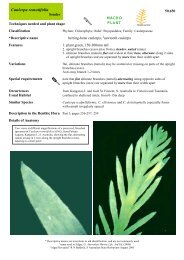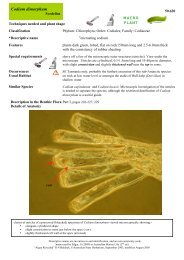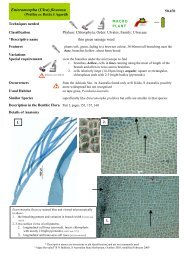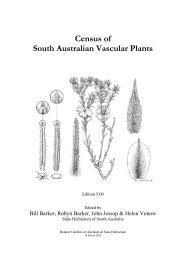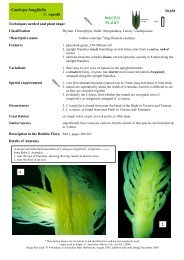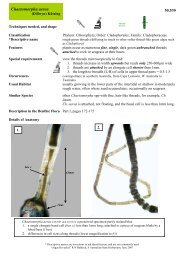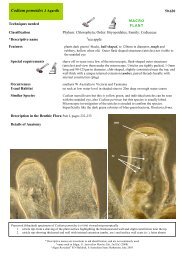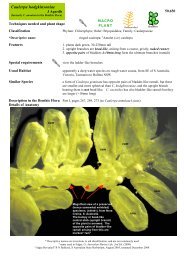Enteromorpha (Ulva) clathrata
Enteromorpha (Ulva) clathrata
Enteromorpha (Ulva) clathrata
You also want an ePaper? Increase the reach of your titles
YUMPU automatically turns print PDFs into web optimized ePapers that Google loves.
<strong>Enteromorpha</strong> (<strong>Ulva</strong>) <strong>clathrata</strong><br />
(Roth) Greville<br />
Techniques needed and plant shape<br />
Classification Phylum: Chlorophyta; Order: <strong>Ulva</strong>les; Family: <strong>Ulva</strong>ceae<br />
*Descriptive name green hair-plant<br />
* Descriptive names are inventions to aid identification, and are not commonly used<br />
“Algae Revealed” R N Baldock, S Australian State Herbarium, October 2003; modified February 2009, October 2009<br />
50.470<br />
Features plants light green, 20-80mm tall, much branched irregularly from the base, of thin<br />
threads 1-3mm wide, cylindrical or slightly flat<br />
Variations variable in thread width, can be loosely attached in calm regions, threads<br />
sometimes unbranched<br />
Special requirements view the branches microscopically to find:<br />
1. cells relatively large, box-shaped always in more than 1 line of cells along<br />
hollow threads<br />
2. chloroplasts often occupy only a part of the cell, have toothed edges and 2-4<br />
bright spots (pyrenoids)<br />
Occurrences worldwide in temperate moderate to calm seas<br />
Usual Habitat in the intertidal and shallow water<br />
Similar Species superficially like many filamentous species, especially <strong>Enteromorpha</strong> paradoxa<br />
but that species has numerous, opposite, fine side branches of a single line of cells<br />
Description in the Benthic Flora Part I, pages 157-160<br />
Details of Anatomy<br />
MACRO<br />
PLANT<br />
Radial<br />
branching<br />
<strong>Enteromorpha</strong> <strong>clathrata</strong> (A6510 slide 7570) stained blue and viewed microscopically<br />
1. cell detail of a cylindrical side branch, showing the several lines of cells<br />
2. branching pattern showing irregular side branches containing several lines of cells (pluriseriate)<br />
3. cell detail showing the jagged edges to some chloroplasts<br />
tubular
forms of <strong>Enteromorpha</strong> <strong>clathrata</strong><br />
(Roth) Greville<br />
4. an attached plant (A54573<br />
5. fine, detached hair-like form<br />
(A3343b)<br />
* Descriptive names are inventions to aid identification, and are not commonly used<br />
“Algae Revealed” R N Baldock, S Australian State Herbarium, October 2003; modified February 2009, October 2009




